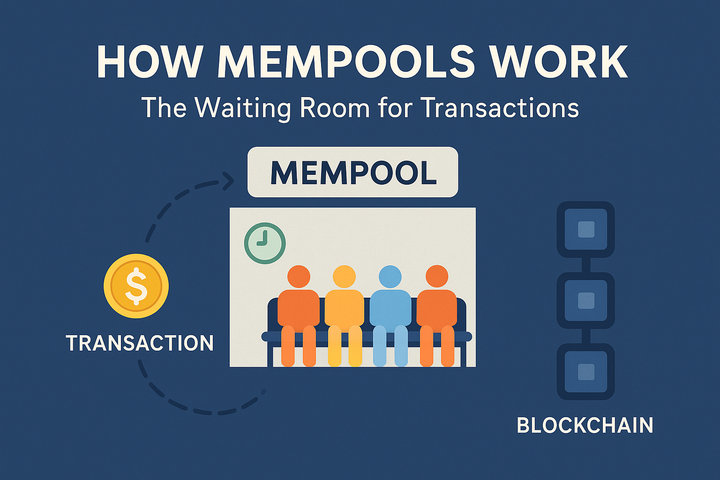MEV & Liquidity Drain: Why Mitosis Matters in Protecting DeFi Users

Introduction:
Maximal Extractable Value (MEV) is a term that’s been causing waves in the DeFi space for quite some time. MEV represents the profit that miners, validators, and other network participants can extract from transaction ordering, front-running, and other market manipulation strategies. While this isn’t a new concept, its impact on DeFi is growing, especially when liquidity is compromised or drained by MEV attacks.
Mitosis plays a key role in addressing these challenges, ensuring that liquidity remains stable and that users are protected from malicious MEV activities.
Understanding MEV and Its Impact on Liquidity
MEV’s rise has brought significant concern in DeFi. Miners and validators with control over transaction ordering can manipulate trades for their own benefit, often at the expense of regular users. This can cause price slippage, increased gas fees, and an overall unhealthy market structure.
Liquidity is one of the most critical elements in DeFi. Without it, decentralized exchanges (DEXs) and lending platforms would cease to function effectively. When MEV attacks drain liquidity, the entire ecosystem suffers, and regular users are often the ones hit hardest.
For more on the topic of liquidity and its importance in DeFi, check out The Liquidity Layer Revolution: Why Universal Liquidity is the Future of DeFi and DeFi Infrastructure: How Mitosis Unifies Liquidity Across Chains.
How Mitosis Addresses MEV and Protects Liquidity
Mitosis is designed to mitigate the negative effects of MEV and liquidity draining. By implementing advanced liquidity management techniques, it ensures that liquidity pools remain intact, even during periods of high market volatility. The system uses real-time data to monitor and adjust liquidity, protecting users from the often devastating effects of MEV manipulation.
Mitosis’s cross-chain capabilities also play a crucial role in providing liquidity solutions that prevent malicious attacks on any individual chain. This protection is essential to the overall health of DeFi ecosystems.
For more insights into Mitosis's cross-chain functionality, see Cross-Chain Yield Strategies: Unlocking Passive Income in a Multi-Chain World.
The Role of Mitosis in the Broader DeFi Ecosystem
Mitosis operates across multiple chains, enabling seamless liquidity transfer without the risk of being manipulated by MEV bots or other malicious actors. Its decentralized nature ensures that no single entity has control over the liquidity flow, making it a crucial tool in maintaining the integrity of DeFi.
Moreover, Mitosis's ability to facilitate trustless transactions between different blockchain ecosystems enhances its role in the broader DeFi landscape. By reducing the impact of MEV, it encourages more participants to enter the market and increases the overall liquidity, benefiting all users.
For further information on the Mitosis ecosystem, check out Mitosis: The Missing Link Between Chains, Liquidity, and Real Yield and DePIN: Decentralized Physical Infrastructure Networks Explained.
What Makes Mitosis a Game-Changer in Protecting DeFi Liquidity?
- Cross-Chain Liquidity: Mitosis leverages its cross-chain capabilities to provide liquidity solutions that aren’t vulnerable to attacks on individual chains. This not only protects liquidity but also ensures that it remains fluid across the entire ecosystem. For more details, see Altseason Reloaded: How to Capitalize on Multi-Chain Opportunities with Mitosis.
- Enhanced Security: Mitosis employs robust security measures to guard against MEV and other forms of market manipulation, making it a reliable partner for DeFi projects looking to protect their users.
- Real-Time Adjustments: The platform uses real-time data to adjust liquidity flows and prevent drains, giving users confidence that their funds are protected from sudden market movements.
Conclusion:
The importance of liquidity in DeFi cannot be overstated, and the rise of MEV attacks threatens its stability. Mitosis’s innovative approach to liquidity protection offers a solution to this problem, helping to ensure that DeFi remains accessible and fair for all users.
As DeFi continues to evolve, tools like Mitosis will be essential in safeguarding the interests of users and maintaining the integrity of decentralized finance ecosystems.
References:
- The Liquidity Layer Revolution: Why Universal Liquidity is the Future of DeFi
- DeFi Infrastructure: How Mitosis Unifies Liquidity Across Chains
- Cross-Chain Yield Strategies: Unlocking Passive Income in a Multi-Chain World
- Mitosis: The Missing Link Between Chains, Liquidity, and Real Yield
- DePIN: Decentralized Physical Infrastructure Networks Explained
- Altseason Reloaded: How to Capitalize on Multi-Chain Opportunities with Mitosis



Comments ()